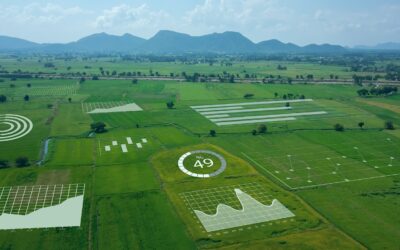Triage and Technology: 5G Connectivity for Real-Time Collaboration in The Most Stressful Times
25
January 2022
Pente Networks Marketing
Throughout the emergency service sector, the necessity for rapid, effective, and data-driven responses has been an essential prerequisite in day-to-day operations, with emergency helplines even further inundated due to the Coronavirus pandemic.
As a result, the prevalence of innovative and cutting-edge 5G technology has increased, improving the outcomes of vital life-or-death situations across fire and rescue, law enforcement, and emergency medical services.
Recently, Gartner reported the pandemic had fueled the rise of 5G network infrastructure worldwide by 39% in 2021. This expanse of 5G networking strengthens the reliability of critical communication systems through a plethora of benefits, including edge computing, adaptive smart sensors, and greatly reduced latency that can hasten the transfer of data and overhaul inconsistent traditional systems.
Many 5G networks are also supported by Citizens Band Radio Service (CBRS), made of 150 MHZ of the 3.5 GHz band that reaches 3.7 GHz. It is a cellular solution that functions between unlicensed and licensed connectivity solutions. Utilizing the available CBRS spectrum to reduce the degradation of signals for 5G monitoring technology and ensuring networks retain a stable connection throughout a crisis allows operators to effectively respond to an influx of emergencies from any location appropriately.
“Enterprise 5G provides communities with an ability to securely, predictably, and efficiently connect the first responders with ER doctors and nurses even as those who require immediate care are being seen at home, then driven to the hospital by ambulance,” said Roy Timor Rousso, CRO, JpU, an enterprise 5G network service provider. “Only with the low latency and reliability of 5G can communities stay connected – whether directly or through a dispatch system that orchestrates collaboration on mobile devices and connected vehicles.”
Additionally, CBRS can be employed through 5G mobile devices and wearable cameras being developed for the field that can be used in various scenarios to transmit and receive data from first responders. This enables them to thoroughly analyze available data in response to the developing situation instead of interpreting and making decisions with limited intelligence.
“Communicating this essential information and providing enhanced navigational systems can become critical to saving the lives of the victims and the respondents,” Roy Timor Rousso said. “Both are often in life-threatening events such as fires, the ability to receive real-time instructions and knowledge through medical records and structural information is critical.”
In addition to his work with JpU, Timor-Rousso is a Col. in an elite mobile infantry unit in the Israel Defense Forces (IDF), the sole military wing of the Israeli security forces. “Some of the prime applications being developed are using 4G/5G enabled platforms in the field, adopting innovations including the ability to have a remote doctor guide a medic, helping them help the wounded using an HD camera, high-quality audio, and augmented reality. Another scenario is the ability to have a soldier in the field tap into an expert or engineer when they need to dismantle a piece of machinery in a certain way, or otherwise respond to an incident.”
Boasting exceptional low latency and increased data transfer speeds, 5G networks reportedly can support over 1 million connected devices per square kilometer whilst requiring greatly reduced wiring and other physical infrastructure.
With the continuing investment into 5G networks, it is increasingly likely that other innovative devices will be used by these networks in enhancing the already powerful security systems it enables for citizens and respondents who consistently offer their lives.
Originally published on HealthTech Zone
Similar Blogs
5G’s Impact on Farming and Precision Agriculture Now and in the Future
The constant expanse of 5G utilization throughout a variety of industries has continuously produced innovative technologies that have expedited digital transformation globally. One of the most notable industries adapting via the influx of 5G technology is agriculture, which has resultantly thrived by incorporating resilient cellular technology into management systems, greatly diminishing resource consumption and providing considerably improved yields, maximizing efficiency.
Connected Healthcare in the Age of Increasingly Elusive and Fast Moving Covid Strains
Just when we thought the spread of Covid-19 had been brought under control by vaccines, boosters, behavioral modification, improved distancing and sanitation measures in buildings, and information sharing, we found ourselves once again confounded by the latest, most transmissible strain – Omicron, which recently hit an astounding 1 million cases per day in the U.S. alone.
As 5G Spreads Across the US, CBRS Unlocks New Opportunities for Rural and Urban Communities
As we start off the new year with new challenges, investment in enterprise 5G deployments that capitalize on the economic benefits of using the Citizens Broadband Radio Services (CBRS) is driving investments toward the $1 billion mark, according to the Dell’Oro Group.


